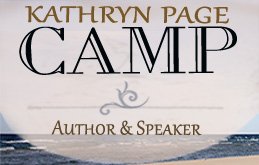As I prepared to pitch a novel at a conference last week, I
thought about how many ways I had started it before finding one that works. And
the biggest lesson I learned? Genre matters.
In order to get the most from this post, you need a framework.
Mirage is contemporary women’s
fiction written for a Christian audience. It tells the story of an ambitious
young lawyer who idolizes her father. When he is arrested for running a Ponzi
scheme, she is initially convinced of his innocence. But as evidence of his
guilt mounts and her own career is threatened, she struggles with God’s command
to forgive. Will she lose everything, or will she discover God’s true plan for
her life?
My first attempt at an opening chapter was filled with
heart-wrenching sequences. It started with a television news report about a
silver Jaguar involved in a fatal accident. (I know that isn’t a Jaguar in the
picture, but it was the only thing I could find to go with this blog post.) Although
the victim is unidentified, Sarah is terrified that it was her father, and
every mile is filled with anguished memories as she rushes to her parents’
home.
I thought it was a great opening. After all, it was a
dramatic scene to grab readers’ attention. Then my writers’ critique group told
me they didn’t know enough about Sarah yet to care.
We don’t know anything about Indiana Jones at the beginning
of Raiders of the Lost Ark, either,
and it works anyway. So why was mine
different? Maybe if I had added more heart-stopping situations it would have
been okay as the opening for a thriller or an action adventure. Those genres
attract readers who wait for the next heart attack. But readers of women’s
fiction are looking for human emotions, not heart-stopping scenes.
My second attempt took a metaphorical approach. Sarah
admired the façade of her parents’ home without realizing that façades are
sometimes deceptive. But that one just fell flat. Maybe I could have made it
work for literary fiction, but that’s not what I was writing.
On to number three. I lopped off the first couple of
chapters and started with a favorite one where Sarah goes sailing with her new
boyfriend. Then I submitted it for a critique at a writers’ conference I
attended last year. The comments were very helpful—for a romance. Shame on me
for misleading the reader as to the genre.
My fourth attempt was another try for a drama. Sarah was
tutoring a first grader, and the chapter opened with Sarah learning that the
girl’s brother had just died. The problem? It lead my critique partner to
expect the girl to have a greater role in the story than is the case.
I stuck with my fifth attempt. It doesn’t start with a bang,
but all it has to do is grab the reader’s attention. The opening chapter now begins
this way:
“When
was the last time you visited someone in prison?”
Sarah
Bartholomew never had. She didn’t even know any criminals. But she leaned
forward in her pew as the sermon continued.
“Our
church sends volunteers into the jail once a week to tutor inmates who dropped
out of high school. Prisoners who earn their diplomas are less likely to return
to a life of crime when they get out.”
That
sounded interesting, but the firm would never let her do it. The partners
already begrudged the time she spent tutoring at the Boys & Girls Club.
The
minister pointed toward the congregation. “The hours are seven to nine in the
evening one day a week. Anyone here can surely give that much.”
Not
if they worked for Mason, Adams, and Marshall. Still, the long nights and short
weekends she put in would be worth it when she made partner.
Besides,
there was a reason she hadn’t gone into criminal law. Defending the innocent
would be too stressful. What if she failed to get them off?
And
she had no sympathy for the guilty.
In the rest of the chapter, Sarah drives to her parents’
house for their regular Sunday afternoon dinner, and they talk about the time
they spend volunteering.
I think this new opening chapter foreshadows the main plot
in the book, in which Sarah discovers that her father has been running a Ponzi
scheme; introduces the three main characters (Sarah and her parents); and makes
Sarah a sympathetic figure because of the time she spends volunteering.
In any event, it works better for women’s fiction than the
earlier attempts did.
By the way, just because a chapter doesn’t work as an
opening doesn’t mean it won’t work elsewhere. I salvaged all of the attempts
except the second and used them elsewhere in the manuscript.
What are your thoughts?













